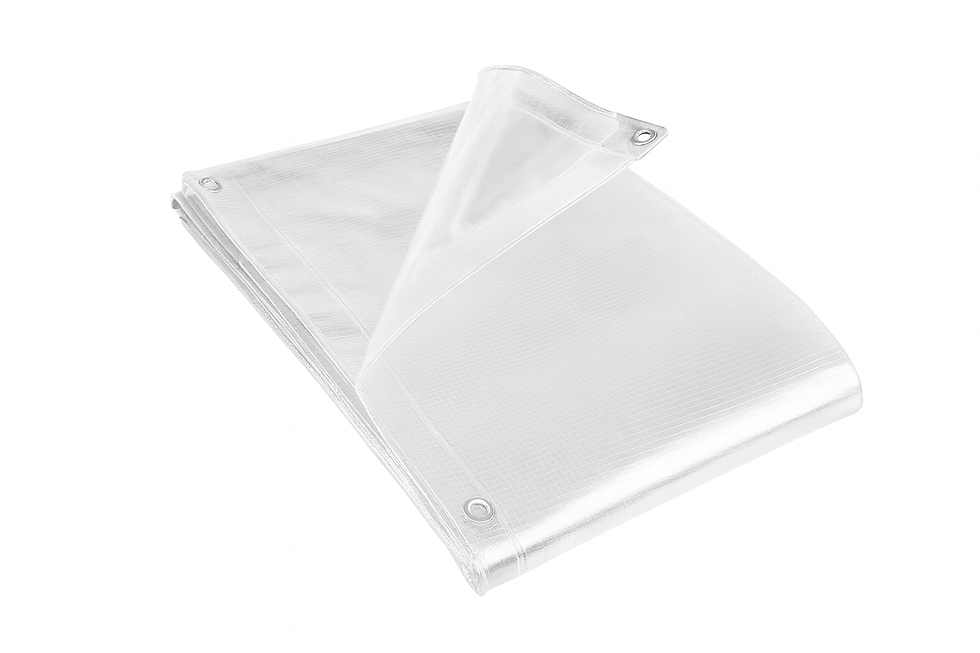Uses of Tarps in Landscaping and Gardening
- UK Tarps
- Jul 30, 2024
- 3 min read
Tarpaulins, otherwise called tarps, are adaptable covers made of sturdy texture that are normally used in many arranging and cultivating applications. Tarpaulin offers a reasonable and compelling response for various cultivating needs, for instance, shielding plants and materials from enduring. A couple of nursery workers have uncovered that appropriately using Tarpaulins UK multiplied the future of plants and supplies.
Protecting Garden Beds and Plants from Weeds
Tarps are a straightforward and harmless ecosystem strategy for hindering weeds. By setting out a tarp under mulch or wood chips, groundskeepers can hold both existing and new weeds back from developing. This saves the time and exertion of manual weeding or applying herbicides.
Choosing the Right Tarpaulin Material
While choosing a tarp for finishing and cultivating utilizes, it's essential to pick a material appropriate to the circumstances and your necessities. The most notable sorts of tarp material each partake in their benefits:
Texture Choices
Polyethylene (PE) tarps are economical, waterproof, and sturdy for general purposes. In any case, they are not UV-safe long haul.
Polyvinyl Chloride
Polyvinyl chloride (PVC) Tarpaulins are heat-fixed for additional strength and frequently built up with polyester backing. PVC gets through enduring great without a doubt anyway is semi-inflexible and costs more than PE.
Canvas Tarps
Canvas tarps are breathable and versatile, making them reasonable for utilizes that don't require all out waterproofing. Notwithstanding, canvas separates all the more quickly with sun openness.
Built up Vinyl
Built-up vinyl gets vinyl waterproofness together with a polyester or cotton backing for rigidity. It gives sturdiness like PVC at a lower cost.
Really Focusing on and Putting Away Tarps
Appropriate Clear Tarpaulin care and capacity are critical for expanding their future when used in arranging and planting applications. Following a couple of prescribed procedures will keep tarps looking perfect between utilizes:
Collapsing and Stockpiling Tips
To forestall daylight hurt while putting away tarps long haul, overlay them firmly and wrap or spot them in a dark holder like a garbage sack. For standard use tarps, openly roll as opposed to collapsing to make an effort not to wrinkle the plastic. Store back to front of direct force/sun if conceivable.
Momentary Capacity
Tarps can be hung outside under an eave or deck cover at whatever point used month to month. Attempt to shake or overlay once in some time to forestall soddenness improvement.
Long haul Stockpiling
Putting away Tarpaulins in a cool, dull basement or withdrawn carport safeguards against temperature restricts that make plastic become a frail sluggish season. Protected yards can moreover work.
Covering Kindling Stacks
Keeping kindling tarpaulin covered and dry is huge for really consuming kindling later in the season. Particularly ready, clamminess free wood consumes more boiling and longer than wet wood.
Cleaning and Keeping up with Tarps
For soil, shape, or green development improvement, tarps can be flushed off with a delicate chemical and water game plan. For outrageous wrecks, a 1:10 blur to water proportion is overall safe for most textures. License tarps to totally air dry to forestall form. Minor tears may from time to time be fixed with tacky tape on the underside.
Protecting Plants from Frost or Snow
A common utilization of heavy duty tarpaulins uk is to safeguard cold-sensitive plants that poor person totally cemented off from approaching ice or snowfall. By uninhibitedly balancing a tarp over the plant like a tent, the ensuing more modest than-anticipated nursery influence keeps as of late transcending freezing.




Comments